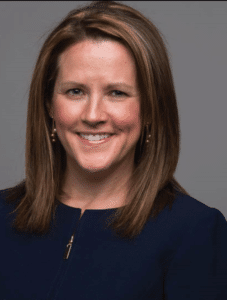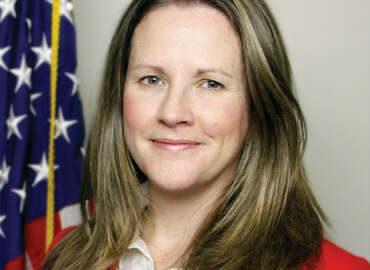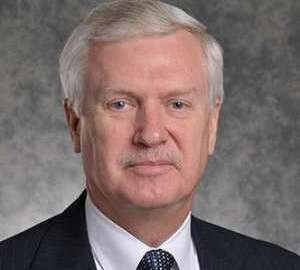
Why the workforce must drive the success of shared services
Beth Angerman, the director of the Shared Solutions Performance Improvement (SSPI) Office at GSA, said engaging all stakeholders is an important part any large...
For the second year in a row, the Unified Shared Services Management Office in the General Services Administration came out a winner in the Congressional budget process.
In the fiscal 2018 budget deal that Congress agreed upon March 21, the USSM once again is receiving funding from Congress to the tune of $2 million.
And the funding couldn’t come at a better time for USSM as the move to shared services is at the center of the Trump administration’s new President’s Management Agenda. And there are no signs that this focus will let up anytime soon as GSA mentions shared services 99 times in its fiscal 2019 budget justification to Congress.

Beth Angerman, the acting associate administrator of the Office of Governmentwide Policy and the director of the Shared Solutions Performance Improvement (SSPI) Office at GSA, said the workforce will drive the success of shared services. GSA recently renamed the USSM to the SSPI.
“One of the things that we are learning and seeing in government is engagement of stakeholders as part of the planning process for large transformational work, whether IT modernization, business process or to shared services,” Angerman said on the Courageous HR show. “The biggest lessons we’ve had from both our successes and challenges over the years is we need better engagement of people earlier in the process.”
The challenge for many federal programs is defining the stakeholders. Many times it’s all or some of the citizens and businesses as well as other federal, state and local governments.
“It’s an important exercise at the very early stage to map who your stakeholder are. You need to map them from who has the direct touch or closest impact to the change you are trying to implement all the way to ‘why are we doing this?’ The why are we doing this should always land in a story to the taxpayer. Even if you are talking about mission support, we should be making mission support functions more efficient and effective and bring IT to do that,” she said. “Part of the challenge that we’ve had in government is being able to make that tie early to explain what problem we are trying to solve as early as possible, and helping employees understand what that problem is and how they can be a real player in making effective change.”
Angerman said agencies can’t do shared services or IT modernization or really any mission or operational efforts without buy-in from the people doing the work.
“It’s the so-what that matters? The why? And tying that to the mission of the agency, tying that to the work of the people and helping them see themselves in a future where the thing they have done for the last 30 years may actually be something new and contribute to higher value work. That is a leadership problem and leadership challenge to help the workforce see that,” she said. “When we talk about human resources and the nexus to HR, there is a role for the HR community in these agencies to help these business leaders really understand how to engage their staffs, how to help their staffs see opportunities for the future, how to right-size their workforce, all of these things are really key to the role of the chief human capital officers in our agencies.”
One way the SSPI is ensuring people are at the front edge of the implementation of shared services is through a new initiative called Feds-to-Feds solutions team.
Angerman said the team’s goal is to bring lessons-learned based on what has worked or what hasn’t at other agencies.
She said the Feds-to-Feds team helps agencies in person or virtually.
“We put as many of the tools as we can online. It’s really nice because we’ve also brought in all the tools the Performance Improvement Council staff have worked on with the PIC,” Angerman said. “We have guidance and tools to help agencies think through the metrics and figure out how they can identify the problem they are trying to solve before they start moving through the transformation.”
Angerman said the Feds-to-Feds team developed organically as agencies began calling the SSPI for help in developing their path to move to shared services.
“The role of our office is to give agencies tools, templates and processes to help them think through what all of those aspects of change management are,” Angerman said. “The M3 playbook that we rolled out, we have over 19 agencies working with my office now on the earliest phases of the playbook. What do I want? How will I approach change management? How will I define success for this thing I’m doing? It’s really understanding what the process needs to be.”
Angerman said even with all this talk about people, technology will play a key role in helping with the transformation. She said the SSPI is in the market research phase to discover applications that can give agencies new processes and innovation, and move them off low-value work.
“When we talk about the benefits of shared services, you can get standardization and that will drive scale and efficiency,” she said. “You have to do standards first and agree on what you want. We have to agree on what we want in terms of outcomes and not the way we’ve always done it.”
Angerman said the standards for financial management, led by the Treasury Department, are making progress, including the recent release of the draft of the data definitions on GitHub.
The Office of Personnel Management completed the standards for payroll and work schedule leave management, and continue to work on standards for the other components of HR.
While people and technology are important to transform agencies, industry’s role is expanding too.
Angerman said the use of software-as-a-service is creating a different type of partnership with vendors.
“Their role is to tell us what they got, what they are investing in, what they are building, what they are seeing as best practices to inform how we will go,” she said. “I think we have successfully engaged them to think about the path forward and help us inform what will come next. I think we need to think about better contracts, smarter contracts that really articulate the need the government has and the dependency on industry for the innovation piece, the compliance piece and the expectation they will bring the robots and all the cool stuff that everyone talks about so our communities can focus directly on HR management, financial management, the work and the acquisition piece.”
Copyright © 2024 Federal News Network. All rights reserved. This website is not intended for users located within the European Economic Area.
Jason Miller is executive editor of Federal News Network and directs news coverage on the people, policy and programs of the federal government.
Follow @jmillerWFED
Related Stories






